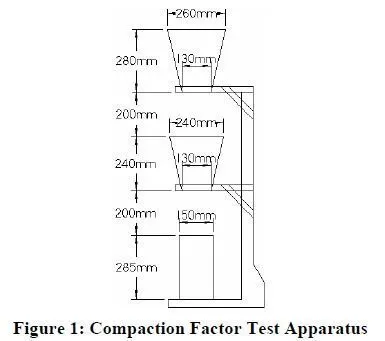The cone penetration test (Sachan and Kameswara Rao 1998) was developed to be a superior test for measuring the workability of fiber-reinforced concrete. It was designed to be an improvement over the slump test, inverted slump cone test, and Vebe consistometer.
The test apparatus consists of a 4 kg metal cone with a 30 degree apex angle. The cone is allowed to penetrate a sample of concrete under its own weight. The depth of penetration is measured as an indication of workability.
In developing the test, multiple apex angles and cone weights were examined in order to determine the optimum device characteristics. By varying the weight and apex angle, the developers of the test were able to determine a relationship between the cone weight, cone geometry, the penetration depth, and the properties of the concrete, as shown in Equation [7]:
d= (K . W^2) / θ
where W = cone weight, θ = apex angle, d = depth of penetration, and K and n are empirical constants based on the workability of the mix.
Sachan and Kameswara Rao found that the results of the cone penetration test correlate well to slump, inverted slump cone time, and Vebe time. The test method is suitable for low slump concrete mixes.
Unlike the inverted slump cone test and Vebe consistometer, the cone penetration is not a dynamic test and, therefore, is affected by thixotropy. Since fiber-reinforced concretes can behighly thixotropic, the test is only appropriate for a limited range of fiber-reinforced concrete mixtures. The test method is not widely used.
Advantages:
The test is simple to perform and provides a direct result.
The test can be performed on in-place concrete.
Disadvantages:
The test is a static test and, thus, not particularly appropriate for fiber-reinforced concrete.
While the results ofthe test are related to yield stress, the results are not recorded in fundamental units.
